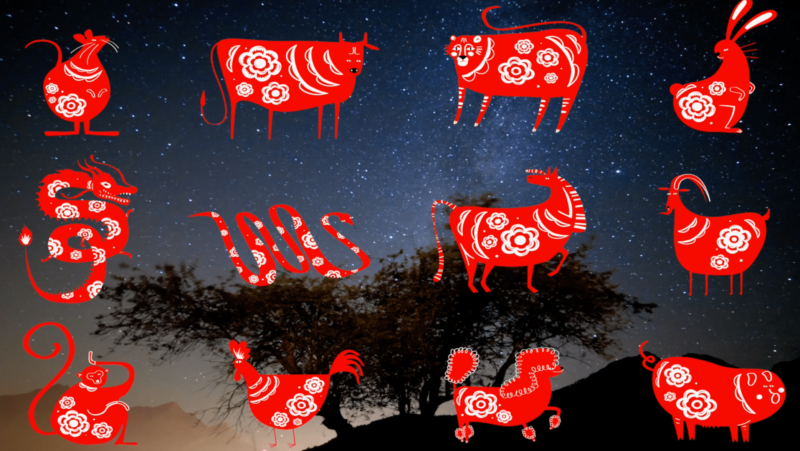The Dao Insights team have produced a mini-documentary that looks into some of the challenges that women face in Chinese society, how this is changing, and the opportunities for brands.
Read the script below:
Viya – million dollar livestreamer, Zhang Nan – CEO of ByteDance China, Liu Wen – supermodel, Li Ziqi – record-breaking YouTuber.
These are just a few women who are changing the course of history in China. By achieving milestones in their respective industries, they are encouraging women in China and across the world to break through the glass ceiling. As China’s economy is developing and the country has digitalised beyond belief, countless doors have opened to women in modern China. But it hasn’t always been like this – let’s take a brief look at the journey to get there.
Women’s experience in the past
Confucian philosophy influenced women’s position in society due to the importance it places on family virtues. In Imperial China, women were seen as the subordinate gender in social, political, and family life. Footbinding was a common practice to show off a woman’s status, while concubines were a key part of China’s Imperial society. Both were only outlawed in the 20th century.
Mao’s famous phrase that “women hold up half the sky” seemed to suggest that the founding of the People’s Republic of China would be the start of a new era. However, the fact that men were still the preferred gender was highlighted when the one-child policy came into effect in the late 1970s. Traditionally, the family line can only be continued by men and women leave their parent’s home to move in with their husband’s family. It is unsurprising then that the one-child policy created one of the world’s worst gender imbalances as many families favoured male children.
How has it changed?
But, to what extent do traditional gender roles still influence today’s society?
As with the rest of the world, women’s rights have taken a turn for the better, however, social pressures still exist.
The term ‘leftover women’ or ‘shèngnǚ’ (剩女) has been widely used to describe women in their late 20s who are still single. While the phrase is going out of fashion, the idea that women must be married by a certain age still prevails. Cuī hūn (催婚) or marriage pushing is a common phenomenon and young women face considerable pressure from their parents and relatives to get married. Marriage markets are still very common in parks in Chinese cities where relatives seek out a partner for their single children. They come armed with a CV-like advert containing their children’s educational status, work, income and height.
What about women’s roles in the workplace?
China has one of the highest labour force participation rates for women in the Asia-Pacific region with women making up 43.7% of workers in 2019. And China is home to two-thirds of the world’s top women billionaires, with a higher number of female entrepreneurs than the United Kingdom and the United States.
Yet, women are still nowhere to be seen in the senior levels of China’s political system with just one woman holding a position in the 25-person Politburo, the Party’s top decision-making body.
Since the implementation of the ‘two-child policy’, China has made great progress when it comes to maternity leave. The national legislation allows for a minimum of 98 days, while some provinces allow for up to 190 days as seen in Hainan and Henan. Still, companies often discriminate on the basis of future pregnancies. In addition, on top of their workload, many women are still expected to take on domestic tasks once they get home and there is little protection for those who face domestic abuse.
China has had a ‘#MeToo’ movement, but it has been different in nature to other parts of the world. Still, much of the recent discussion about women’s rights and equality in China also originated on social media as users share their thoughts on trends, media, campaigns and news stories.
Discussion about women’s rights in the media
TV shows and films have played a major role in igniting discussions.
Last year, the TV shows Sisters Who Make Waves 乘风破浪的姐姐 and Nothing But Thirty 三十而已 examined the social pressures associated with women in their thirties. They were both widely viewed and provoked extensive discussions on Weibo. A hashtag relating to Sisters Who Make Waves gained over 45 billion views and the show even formed the backbone of a campaign from Audi.
Later in the year, WeChat owner Tencent released China’s first-ever female monologue Hear Her 听见她说. Its first episode examined the unfair expectations that Chinese women face to have a slim face, small waist, thin legs, wear makeup and dress well. In response, many netizens agreed that beauty standards should be redefined by individuals not society.
This year, the movies My Sister 我的姐姐 and Hi, Mom 你好,李焕英 have inspired conversations about women’s roles within the family and the continuing gender preference for men. With an unusually female-focused plot and a female director, Hi, Mom was hugely successful in the Chinese box office. It also surpassed Wonder Woman to become the top-grossing film of all time with a female director.
China’s ‘She-Economy’
As Chinese women’s consumption power has increased, the so-called ‘She-Economy’ has emerged. In the run-up to International Women’s Day or ‘Queens Day’ as it is known in China, e-commerce platform Tmall released a report highlighting how women have promoted a new wave of consumption. Indeed, 80% of Tmall’s top new brands in 2020 were focused on female consumer’s needs. Additionally, female entrepreneurs run over half of the clothing brands on the platform.
When it comes to consumer behaviour, Chinese women have shown that they are exerting their increased confidence through their style. One example is the popularity of the minimalistic ‘sexually frigid’ style which has seen women adopt shapeless and simple clothes in order to express their individuality.
The short life of brand history in China and the numerous choices available to Chinese female consumers mean that they are quick to dismiss brands that make superficial or insensitive campaigns.
Brands leverage International Women’s Day
In the past years, many brands have been leveraging International Women’s Day to resonate with their female audience in china.
Cosmetics brand Proya and China Women’s Daily released a viral video campaign ‘Gender is not a borderline, prejudice is’ starring famous rapper Yu Zhen. The video challenged assumptions based on long-standing gender roles and gained huge traction online.
Meanwhile, Neiwai’s ‘no body is nobody’ campaign, which has run for the last two years, provoked a discussion about beauty standards by featuring women of different body shapes, ages and personalities.
Perfect Diary and Dior picked out inspiring female celebrities in their digital campaigns, while Tmall created an interactive bullet-screen wall in Shanghai in which passers-by could stand on a podium to challenge gender-biased comments.
Luxury e-commerce platform Net-a-Porter chose a different approach to Proya and Tmall. Net-a-Porter decided to celebrate rather than to expose. They invited actress Tan Zhuo to shoot a creative short film that depicted the outstanding moments in women’s ordinary lives. The video attracted over 21,000 views on WeChat, including comments such as “every woman has powers that no one should underestimate”.
Many of these International Women’s Day campaigns were shared widely on social media and showed the way in which some brands are moving towards a more realistic portrayal of Chinese women.
What does the future hold?
From birth to the workplace, from the political sphere to the home, women in China still face significant challenges in terms of gender equality.
But they are also living longer, have access to more job opportunities and are graduating from university in greater numbers than ever before, leaving bright hope for the next generation of women in China.
In the last few years, women’s issues have often been trending on Chinese social media sites as the topic has become more widely discussed across society. And brands are responding as they hope to win over China’s 685 million women.
Want to learn more about how to market to female Chinese consumers?
Check out our event Understanding China’s ‘She-Economy’ with Bessie Lee and Arnold Ma on April 30.
Read more:









